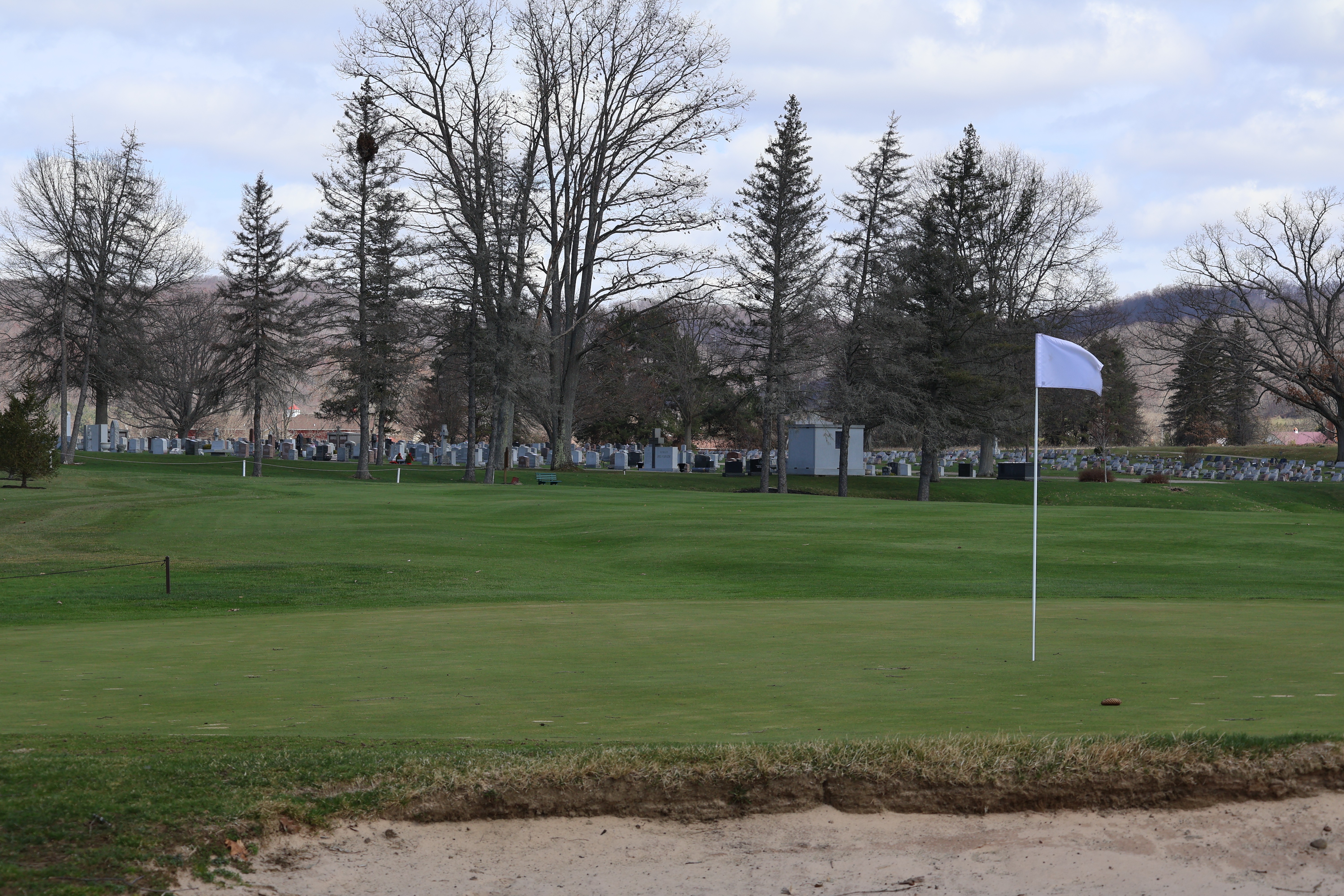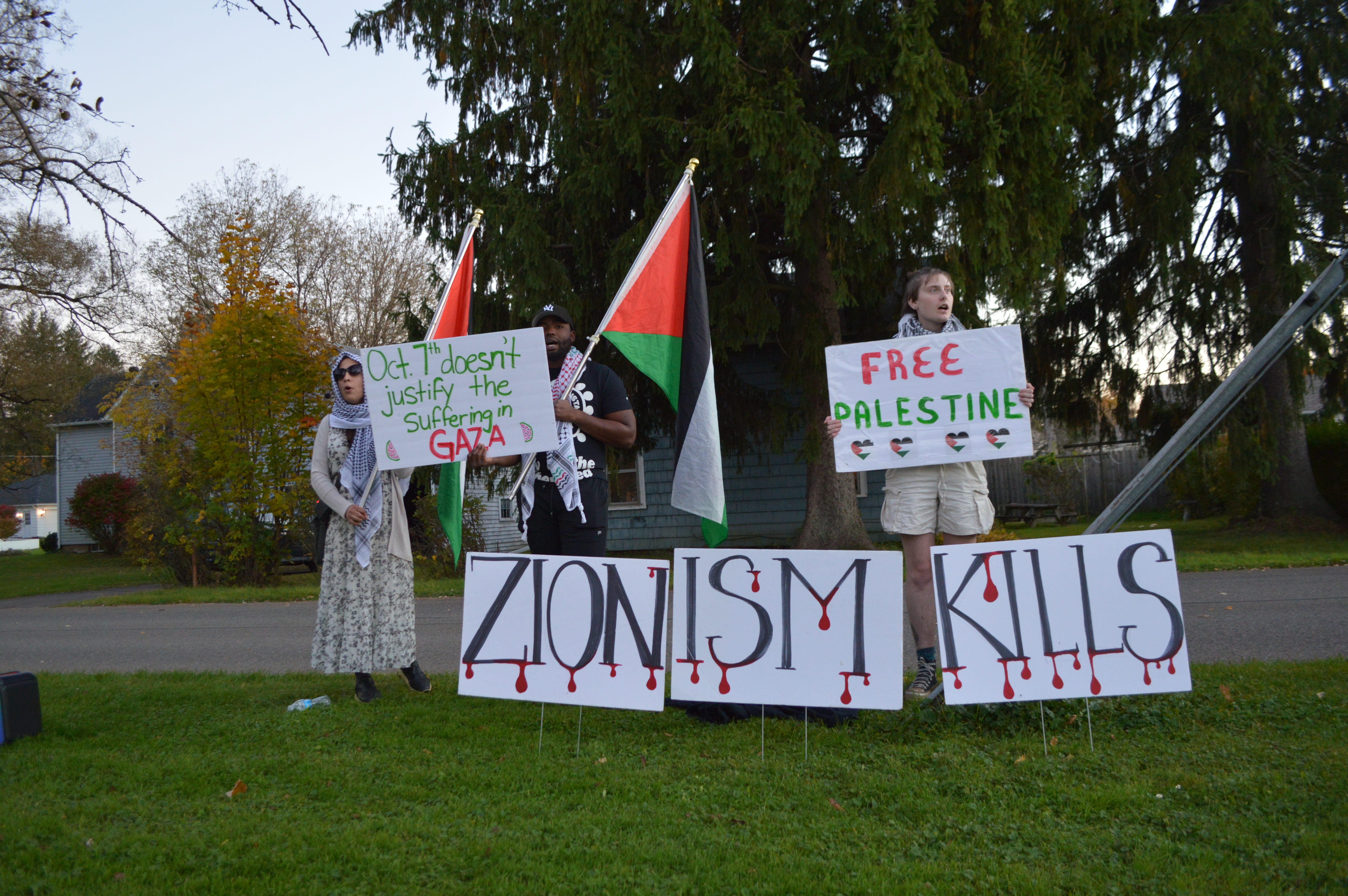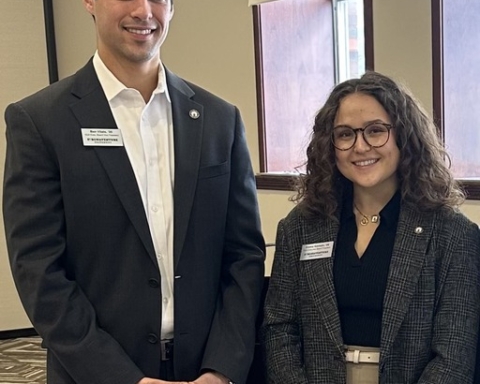If you heard a buzz or ring from your cell phone this past Saturday morning, you were likely bombarded with a series of text messages from St. Bonaventure’s e2campus text alert system or a screech from the university’s notorious steam whistle.
You checked your phone and read a message about some chemical safety drill. You might have scowled in annoyance as you pushed the silent button and returned to sleep. Or you forgot to put your phone on silent and received it in a series of text blasts.
It may have seemed like a nuisance, but the expertly coordinated chemical safety drill that took place on the west side of campus near Shay-Loughlen was of crucial importance.
The drill addressed a harrowing scenario: what if a toxic chemical leaked from a rail car near campus?
The drill had three major purposes, according to Nichole Gonzalez, executive director for residential living and conduct. The drill worked to test the school’s emergency communications system and informed students of the necessary safety protocols to follow during an emergency. The most important function, however, was to test coordination between local emergency crews and the university.
“Hopefully we’ll never see a chemical spill on the railroad, but lessons learned from doing this drill will help us in responding to all different types of large-scale situations,” Gonzalez said.
The drill required coordination between the university and a number of different organizations, including local emergency responders, Olean General Hospital and Allegany-Limestone Central School District. Additionally, about 40 students volunteered to act as spill victims, Gonzalez said. The drill was complete with fake blood and ambulance transportation to Olean General Hospital.
The wide scope of this drill involved a bit of sacrifice from students, including a period of restricted entry and exit from campus. Gonzalez noted students in Loughlen Hall were unexpectedly evacuated and voiced complaints.
“I completely understand that, and (I) apologize for the inconvenience they experienced that morning,” Gonzalez said. “While that wasn’t planned originally, local responders were doing what they felt was necessary.”
The idea of losing precious weekend rest, having restricted travel or waking up to a loaded inbox might be upsetting, but drills like this ultimately work to the advantage of students. In the case of a real emergency, tuition-paying students would expect a quick, organized response from the university and local emergency responders. This drill allowed that coordination to be put to the test.
It is far better to be prepared for an emergency and not need the preparation than it is to be unprepared for a disaster.
Or, more eloquently put: better safe than gruesomely burned by chemicals.
Beyond more routine fire and extreme weather drills, the university aims to have a similarly large-scale drill every few years, Gonzalez said. Such drills are essential to maintaining student safety and well-being. Students should make every effort to get informed on safety procedures to ensure orderly responses to emergencies.
Hopefully these procedures won’t have to be put to use, but knowing what to do in a catastrophic situation will undoubtedly save lives.
This editorial represents the opinion of The Bona Venture staff.






